Comprehensive Waste Disposal Solutions in Walthamstow Village
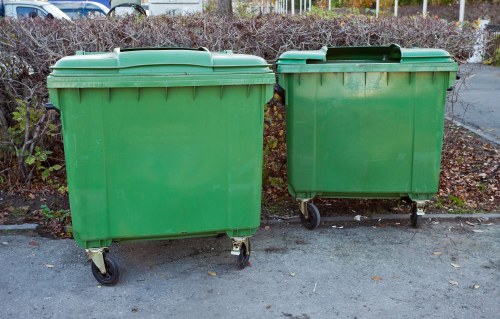
Managing waste effectively is crucial for maintaining the cleanliness and sustainability of any community. In Walthamstow Village, residents and businesses alike are seeking reliable and eco-friendly waste disposal options. This article explores the various waste disposal services available in Walthamstow Village, offering insights into how you can contribute to a greener environment while keeping your surroundings clean.
Waste disposal isn't just about getting rid of trash; it's about responsible management and recycling to minimize environmental impact. Walthamstow Village has implemented several strategies to ensure that waste is handled efficiently and sustainably. From curbside collection to specialized recycling programs, there are numerous ways to handle your waste properly.
Understanding the local waste disposal regulations and available services can help residents make informed decisions. Whether you need to dispose of household waste, bulky items, or hazardous materials, Walthamstow Village provides a range of options tailored to different needs.
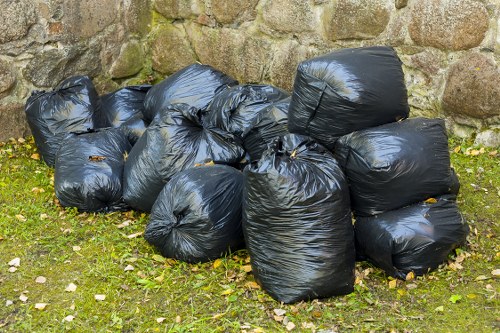
Types of Waste Disposal Services in Walthamstow Village
Walthamstow Village offers a variety of waste disposal services to cater to its diverse community. These services ensure that all types of waste are managed effectively, reducing the environmental footprint of the village.
1. Residential Waste Collection: Regular collection of household waste, including general refuse, recyclables, and garden waste, is a cornerstone of Walthamstow's waste management system. Residents can schedule pickups and follow guidelines to separate different types of waste.
2. Commercial Waste Services: Businesses in Walthamstow Village have access to specialized waste disposal services. These include regular pickups, bulk waste collection, and recycling programs tailored to the needs of commercial establishments.
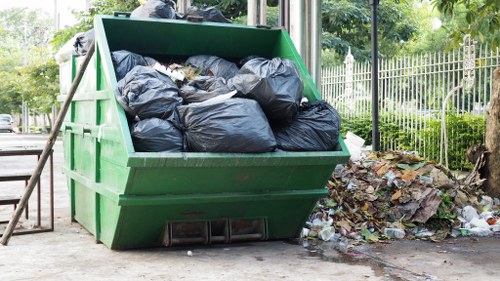
Recycling Programs and Initiatives
Recycling is a key component of Walthamstow Village’s waste disposal strategy. By separating recyclable materials from general waste, residents can significantly reduce the amount of trash that ends up in landfills.
Key recycling initiatives include:
- Paper and Cardboard Recycling: Separate bins are provided for paper products, which are then processed and reused in manufacturing.
- Plastic and Metal Recycling: Dedicated containers for plastics and metals help in their efficient recycling and conversion into new products.
- Electronic Waste Disposal: Special collection points for electronic items ensure that e-waste is handled safely and responsibly.
These programs not only help in conserving natural resources but also promote a culture of sustainability within the community.
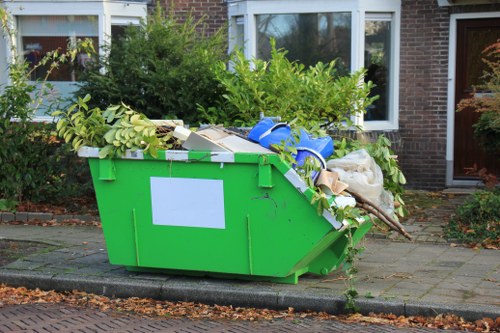
Bulk Waste and Hazardous Material Disposal
Handling bulk waste and hazardous materials requires careful planning and specialized services. Walthamstow Village provides solutions to manage these types of waste safely.
Bulk Waste Collection: For large items like furniture, appliances, and renovation debris, residents can schedule bulk waste pickups. This service ensures that bulky items are disposed of properly without causing inconvenience.
Hazardous Waste Disposal: Items such as batteries, paint, chemicals, and electronic devices need to be disposed of with care to prevent environmental contamination. Walthamstow Village offers designated drop-off points and special collection services for hazardous materials.
By providing these services, the village ensures that even the most challenging types of waste are managed in an environmentally responsible manner.
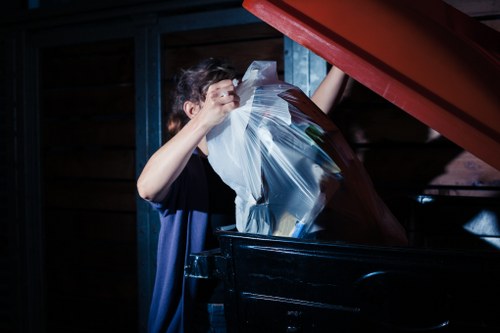
Community Involvement and Education
Community engagement is vital for the success of waste disposal programs. Walthamstow Village emphasizes educating residents about the importance of proper waste management and how they can contribute.
Educational programs and workshops are regularly held to inform the community about recycling, composting, and reducing waste. These initiatives encourage residents to adopt sustainable practices in their daily lives.
Moreover, collaboration with local schools, businesses, and environmental groups helps in spreading awareness and fostering a collective effort towards a cleaner and greener village.
Technological Advancements in Waste Management
Embracing technology can enhance waste management efficiency. Walthamstow Village is incorporating modern technologies to streamline waste disposal processes.
Smart Waste Collection: Using sensors and data analytics, waste collection schedules can be optimized, reducing unnecessary pickups and ensuring timely waste removal.
Automated Recycling Systems: Automated sorting and recycling facilities improve the accuracy and speed of processing recyclable materials, making recycling more effective.
These technological advancements not only improve the efficiency of waste disposal but also contribute to sustainability goals by minimizing resource usage and emissions.
Benefits of Proper Waste Disposal
Effective waste disposal brings numerous benefits to Walthamstow Village and its residents. These advantages go beyond just keeping the area clean.
- Environmental Protection: Proper waste management reduces pollution and conserves natural resources, contributing to a healthier environment.
- Public Health: Effective disposal of waste minimizes the risk of disease and maintains sanitation standards.
- Aesthetic Improvement: Clean streets and well-maintained waste disposal facilities enhance the visual appeal of the village.
- Economic Efficiency: Efficient waste management can lower costs for both the municipality and residents by optimizing resource usage.
By prioritizing proper waste disposal, Walthamstow Village ensures a better quality of life for its community members.
Challenges in Waste Disposal
Despite the robust waste management system, Walthamstow Village faces several challenges in waste disposal. Addressing these challenges is essential for maintaining the effectiveness of the programs.
- Waste Volume: Increasing population and consumption rates lead to higher waste volumes, putting pressure on existing disposal systems.
- Recycling Contamination: Improper sorting of recyclables can contaminate entire batches, making recycling less efficient.
- Funding and Resources: Adequate funding is necessary to maintain and upgrade waste management infrastructure, which can be a financial strain.
Overcoming these challenges requires continuous community participation, investment in technology, and adaptive management strategies.
Future of Waste Disposal in Walthamstow Village
The future of waste disposal in Walthamstow Village looks promising with ongoing initiatives aimed at enhancing sustainability and efficiency.
Plans include expanding recycling programs, integrating more advanced technologies, and increasing public awareness about waste reduction. Additionally, the village aims to collaborate with environmental organizations to introduce innovative waste management solutions.
By focusing on these areas, Walthamstow Village is set to become a model for effective and sustainable waste disposal, benefiting both current and future generations.
Local Areas Surrounding Walthamstow Village
Walthamstow Village is surrounded by several nearby areas, each contributing to the overall waste disposal ecosystem. These areas share similar waste management practices and collaborate to ensure a cohesive approach.
- Highams Park: Just north of Walthamstow Village, Highams Park offers extensive recycling facilities and community clean-up events.
- Blackhorse Road: South of the village, Blackhorse Road has specialized services for hazardous waste disposal.
- Victoria Park: East of Walthamstow Village, Victoria Park is known for its sustainable waste reduction programs.
- Chingford: West of the village, Chingford collaborates on bulk waste collection and recycling initiatives.
- Wood Street: Nearby Wood Street benefits from shared waste management resources and educational workshops.
- Clayhall: Southeast of Walthamstow Village, Clayhall focuses on electronic waste recycling and safe disposal.
- Dagenham: A bit further out, Dagenham provides additional support for large-scale waste disposal and processing.
- Snaresbrook: Close to Walthamstow Village, Snaresbrook emphasizes community involvement in waste management.
- Gants Hill: Gants Hill contributes through its extensive composting programs and garden waste collection.
- Wanstead: To the southwest, Wanstead collaborates on recycling education and resource conservation efforts.
- Upper Walthamstow: Upper Walthamstow shares resources for bulk waste management and special disposal services.
- Brockley: Brockley enhances the waste disposal network with advanced recycling technologies.
- Leyton: Leyton participates in joint waste reduction campaigns and sustainable practices.
- South Tottenham: South Tottenham supports through coordinated hazardous waste disposal initiatives.
- Tottenham Hale: Tottenham Hale assists with innovative waste management solutions and community outreach.
These surrounding areas work in synergy with Walthamstow Village to create a comprehensive and effective waste disposal network, ensuring that the entire region benefits from sustainable practices.
Tips for Effective Waste Disposal
Residents of Walthamstow Village can adopt several practices to enhance waste disposal efforts and contribute to a cleaner environment.
- Separate Your Waste: Always sort your waste into recyclables, compostables, and general refuse to improve recycling rates.
- Reduce Waste: Minimize the amount of waste you produce by choosing reusable products and avoiding single-use items.
- Compost: Composting organic waste like food scraps and garden trimmings can enrich soil and reduce landfill waste.
- Proper Disposal of Hazardous Materials: Ensure that hazardous items are disposed of through designated channels to prevent environmental contamination.
- Participate in Community Clean-Ups: Engage in local clean-up events to help maintain the village’s cleanliness and promote environmental responsibility.
By following these tips, individuals can play a significant role in improving waste disposal practices and supporting the village’s sustainability goals.
Conclusion
Waste disposal in Walthamstow Village is a well-structured system designed to manage waste responsibly and sustainably. With a range of services catering to different types of waste, ongoing community education, and the integration of advanced technologies, the village is committed to maintaining a clean and healthy environment.
Residents and businesses must continue to participate actively in these programs, adopting best practices and supporting initiatives that promote sustainability. Together, the community can ensure that Walthamstow Village remains a model for effective waste disposal and environmental stewardship.
Frequently Asked Questions
1. How often is residential waste collected in Walthamstow Village?
Residential waste in Walthamstow Village is typically collected once a week. Schedules may vary for recyclables, general waste, and garden waste, so it's advisable to check the local council’s website for specific pickup days.
2. What items are considered hazardous waste and how should I dispose of them?
Hazardous waste includes items like batteries, paint, chemicals, and electronics. These should be taken to designated drop-off points or scheduled for special collection services provided by Walthamstow Village to ensure safe and responsible disposal.
3. Are there any fees associated with bulk waste collection?
Yes, bulk waste collection services in Walthamstow Village may incur fees depending on the size and type of items. It's recommended to contact the local waste management provider for detailed information on pricing and scheduling.
4. How can I participate in community clean-up events?
Residents can participate in community clean-up events by signing up through the Walthamstow Village council website or contacting local environmental groups. These events are regularly scheduled and welcome volunteers of all ages.
5. What are the benefits of composting at home?
Composting at home reduces the amount of organic waste sent to landfills, enriches garden soil, and lowers your household’s carbon footprint. It’s an effective way to recycle food scraps and garden waste into valuable compost for plants.